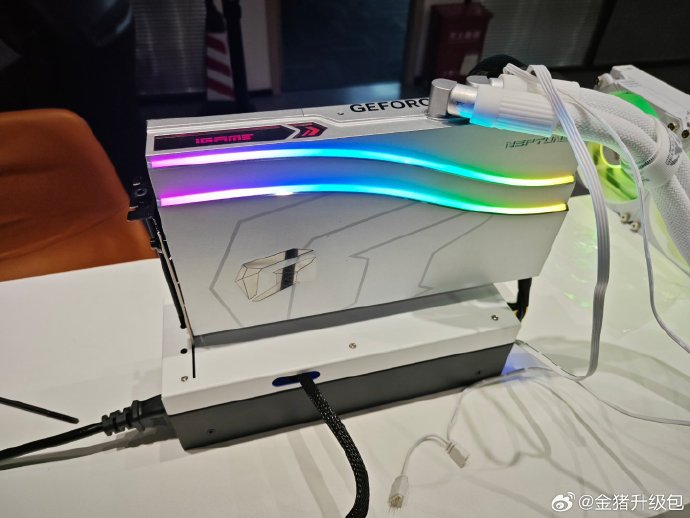Enthusiast showcases the limits of OCuLink with Nvidia’s RTX 4070 Ti SUPER and RTX 4090 GPUs
OCuLink may be fast, but it still has its limitations
External GPU docks have returned to the spotlight thanks to the introduction of OCuLink, a new connector that enabled direct access to four PCIe lanes to enable connection speeds that are faster than Thunderbolt 3/4 docks.
Thunderbolt 3/4 offer users up to 40 Gbps of bandwidth, but OCuLink (OCL) can offer users up to 64 Gbps. That’s a 60% increase in available bandwidth. For external GPU docks, this added bandwidth can significantly increase the performance of connected graphics cards. This makes external GPU solutions much more viable for both gaming and productivity applications.
The Chinese Reviewer “Golden Pig Upgrade“, has put OCuLink to the test with Nvidia’s RTX 4070 Ti SUPER and RTX 4090 graphics cards. Below you can see the results.
Nvidia RTX 4070 Ti Super:
Time Spy Graphics Score
– desktop: 24613
– Graphics dock (Internal Screen): 22199 (Performance loss: 9.8%)Nvidia RTX 4090:
Time Spy graphics Score
– desktop: 36487
– Graphics dock (Internal Screen) : 28230 (Performance loss: 22.6%)
– Graphics dock (external screen): 30429 (Performance loss: 16.6%)Time Spy Extreme Graphics Score
– desktop: 19930
– Graphics dock (Internal Screen): 18902 (Performance loss: 5.2%)
– Graphics dock (External Screen): 19925 (Performance Loss: 0%)
With an RTX 4070 Ti SUPER in 3DMARK Time Spy, the benchmark’s GPU score decreases by almost 10% when compared to the same GPU on a desktop PC. This result was achieved when using screen of their connected Intel Ultra 5 125H powered laptop.
For Nvidia’s RTX 4090 graphics card, performance decreases were more significant. In the same scenario, performance dropped by 22.6% over a desktop-connected RTX 4090. This GPU was also used with an external monitor (not the laptop’s screen), where it was found that the performance drop from using OCuLink decreased significantly.
One thing that is clear from this testing is that the performance limitations of OCuLink vary on a workload-by-workload basis. Not all workloads will be limited by PCIe bandwidth in the same way. We can see with Golden Pig Upgrade’s RTX 4090 3DMARK Time Spy and Time Spy Extreme results.
OCuLink – Internal VS External Screens
So why does using an external screen allow users to get more performance from their GPUs over OCuLink? The answer to this is a simple one. Sending data back to your laptop’s screen uses the bandwidth of your OCuLink connection. By using an external screen, users have more bandwidth for their GPUs to utilise, enabling increased benchmark performance.
When testing 3DMARK Time Spy Extreme, it was noted that the benchmark was less limited by OCuLink than 3DMARK Time Spy. This is because 3DMARK Time Spy runs at a higher framerate. This increases the number of per-frame system-GPU communications. For this reason, GPU performance can be less limited by PCIe bandwidth when games run at higher resolutions/lower framerates.
Since GPUs connected through OCuLink can be bandwidth-limited, it is easy to see why Intel has revealed Thunderbolt 5. Thunderbolt 5 will offer users up to 80 Gbps of bandwidth to utilise, a 25% increase over OCL and a 100% increase over Thunderbolt 3/4.
You can join the discussion on the limits of OCuLink on the OC3D Forums.





